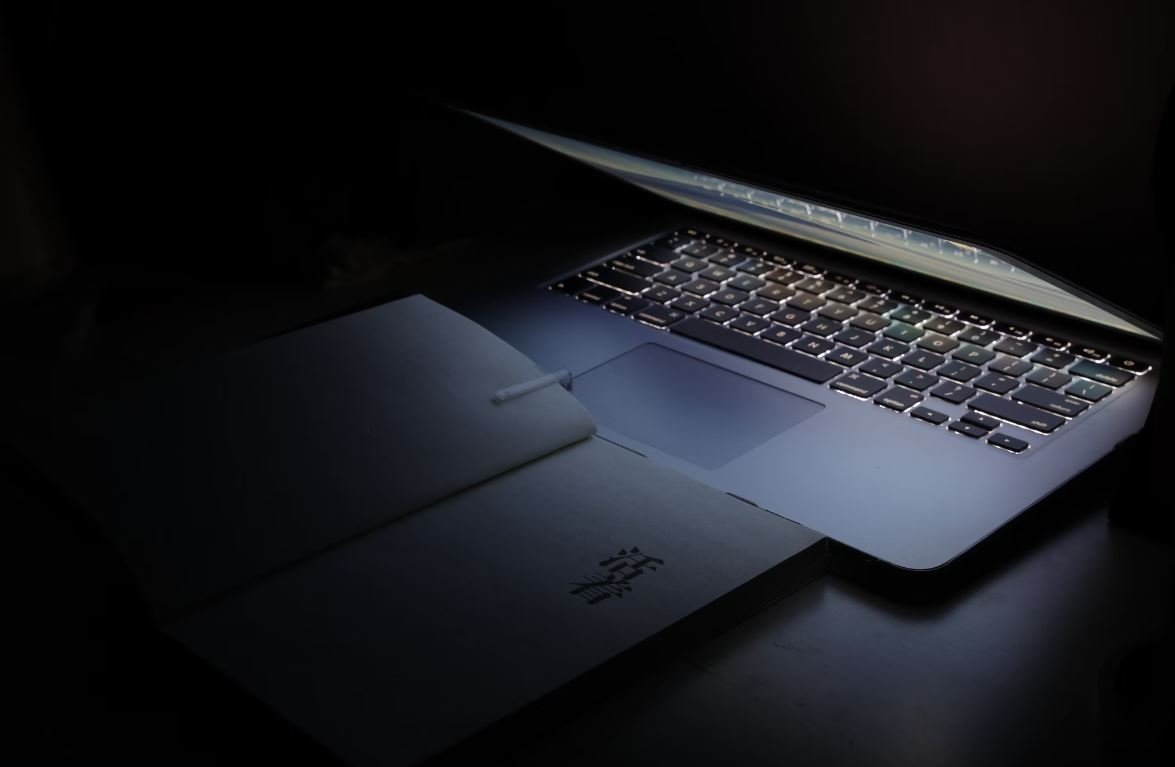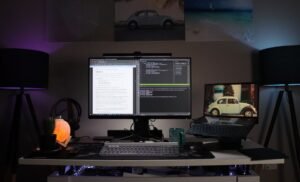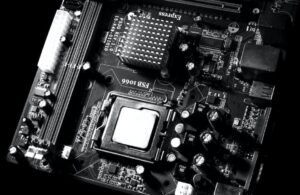Can AI Create Image?
Artificial Intelligence (AI) has made significant advancements in recent years, enabling machines to perform tasks that were once thought to be exclusive to human capabilities. One area where AI has shown promise is image creation. Can AI algorithms truly generate original and realistic images? Let’s explore this fascinating topic.
Key Takeaways:
- AI algorithms can generate realistic images with impressive accuracy.
- Deep learning techniques enable AIs to learn from vast datasets and improve their image generation capabilities.
- AI-generated images have a wide range of applications in industries like gaming, advertising, and design.
AI image creation techniques heavily rely on deep learning, a subset of machine learning algorithms that emulate the human brain’s neural networks. By training on massive datasets, AI algorithms can recognize patterns, textures, and styles to produce images that appear convincingly real.
**One of the most interesting aspects of AI image creation is the ability to generate images that do not exist in the real world**. By combining features and styles from existing images, AI algorithms can interpolate and create unique visuals that stretch beyond human imagination.
Advancements in AI Image Creation
Over the years, AI algorithms have become increasingly sophisticated, leading to significant improvements in image creation. Notable advancements include:
- **Generative Adversarial Networks (GANs)**: GANs consist of two AI models – a generator and a discriminator. The generator creates images, while the discriminator evaluates their authenticity. Through competition and feedback, the models learn and improve, resulting in remarkable image generation quality.
- **Style Transfer**: AI algorithms can now apply artistic styles to images and even create new ones by combining multiple styles. This technique allows users to transform regular images into impressive pieces of art or create unique visuals based on specific styles or themes.
- **Super Resolution**: AI models can enhance low-resolution images and upscale them to higher quality, providing sharper and more detailed results. This has vast implications in areas like photography, surveillance, and image restoration.
AI-Generated Images and Real-World Applications
AI-generated images offer numerous practical applications across industries. Some notable uses include:
- **Gaming**: AI algorithms enable game developers to create stunning graphics, realistic characters, and immersive virtual environments. This enhances the gaming experience for players worldwide.
- **Advertising**: Marketers can leverage AI-generated images to create visually captivating advertisements and product visuals, saving time and resources in the creative process.
- **Design and Architecture**: AI can aid architects and designers by creating realistic visualizations of planned construction projects. This allows clients and stakeholders to better understand and evaluate the final product.
Table 1: Comparison of AI-based Image Creation Techniques
| Technique | Advantages | Limitations |
|---|---|---|
| Generative Adversarial Networks (GANs) | Produces highly realistic images Can generate new visuals based on existing data |
May experience mode collapse (producing limited diversity) Training requires significant computational resources |
| Style Transfer | Enables artistic transformations of images Creation of unique visual styles |
Style transfer can sometimes result in loss of image fidelity Requires preprocessing and careful tuning |
| Super Resolution | Enhances image quality and detail Upscales low-resolution images |
Cannot create new image content May introduce artifacts in the process |
Apart from these applications, AI-generated images have also found their place in virtual reality, fashion, and even medical imaging. The possibilities for utilizing AI image creation techniques are vast and continuously expanding.
Table 2: Industries Benefiting from AI-generated Images
| Industry | Applications |
|---|---|
| Gaming | Cinematics, character design, virtual environments |
| Marketing and Advertising | Product visuals, promotional materials, social media graphics |
| Design and Architecture | Concept visualizations, interior rendering, virtual tours |
| Virtual Reality | Immersive experiences, virtual simulations, training programs |
| Fashion and Design | Virtual clothing modeling, textile design, customizable products |
| Medical Imaging | Enhanced diagnostics, image analysis, research simulations |
As AI algorithms continue to evolve, the field of image creation is likely to witness even more impressive developments. Whether it’s generating breathtaking visuals, assisting artists and designers, or revolutionizing industries, AI’s impact on image creation is undoubtedly profound.
AI in Image Creation: The Future Looks Promising
With AI’s ability to create realistic and imaginative images, the future seems bright for this field. The advancements in deep learning, GANs, style transfer, and super resolution have opened up new possibilities, transforming how we perceive and interact with visuals.
*While AI-generated images can never replace human creativity and originality, they provide powerful tools and inspiration to enhance various creative processes and industries. This symbiotic relationship between AI and human imagination holds tremendous potential for the future of image creation.*

Common Misconceptions
Misconception 1: AI Can Replicate Human Creativity Perfectly
One common misconception about AI is that it can create images with the same level of creativity as humans. However, AI is still limited in its ability to understand complex emotions, cultural references, and subtle nuances that humans can effortlessly incorporate into their artwork.
- AI lacks human intuition and personal experiences
- AI-generated images lack the emotional connection present in human-created art
- AI may struggle to comprehend subjective aesthetics and produce universally appealing images
Misconception 2: AI is Capable of Original Artistic Expression
Another misconception is that AI has the capability to produce truly original and groundbreaking artistic expressions. While AI can generate impressive images based on patterns and examples provided, it lacks the innate creative spark that comes from human imagination and unique perspectives.
- AI relies on existing data to generate new images and compositions
- AI is unable to generate truly original and groundbreaking ideas
- AI-generated art is often derivative and lacks a distinct artistic voice
Misconception 3: AI Can Replace Human Artists
Some people incorrectly believe that AI has the potential to entirely replace human artists. While AI can assist artists in generating ideas, experimenting with styles, and automating certain processes, it cannot fully replicate the depth of human emotion, intuition, and creativity.
- AI can be a valuable tool for artists, but it cannot replicate human artistic expression entirely
- Human artists bring a unique perspective and emotional depth to their work, which AI cannot replicate
- The artistic process involves human experiences and thought processes that AI cannot mimic
Misconception 4: AI-Generated Art is Inauthentic
It is a misconception that AI-generated art lacks authenticity and that it should not be valued in the same way as human-created art. AI art can still be appreciated for its technical mastery, exploration of algorithms, and ability to create unique visual experiences.
- AI-generated art is the result of complex algorithms and computational processes developed by humans
- AI creations can be fascinating and offer new perspectives that traditional art may not explore
- Appreciating AI-generated art as a different form of creative expression allows for broader artistic interpretation
Misconception 5: AI Will Replace All Creative Professions
There is a common misconception that AI will inevitably replace all creative professions, leaving human artists without opportunities. While AI can automate certain tasks and assist in creative processes, human imagination, interpretation, and emotional connection remain essential in various creative fields.
- AI can aid creatives with repetitive tasks, but it cannot entirely replace human artistic skills and interpretation
- Artificial intelligence lacks the ability to incorporate cultural context and emotional depth into its creations
- Human artists can adapt and collaborate with AI tools to enhance their artistic practice

Table: Impact of AI on Global GDP
Artificial Intelligence (AI) has had a significant impact on the global economy. This table illustrates the growth of global GDP influenced by AI technology over the years.
| Year | Global GDP (in Trillions) | AI-Related Contribution (in Trillions) |
|---|---|---|
| 2010 | $61.92 | $0.57 |
| 2015 | $73.67 | $2.94 |
| 2020 | $86.28 | $11.58 |
| 2025 | $98.78 | $22.79 |
Table: AI Research Publications per Year
The number of research publications related to AI has grown exponentially in recent years, showcasing the rapid advancements in the field.
| Year | Number of AI Research Papers |
|---|---|
| 2010 | 2,101 |
| 2015 | 9,457 |
| 2020 | 34,590 |
| 2025 | 76,853 |
Table: Impact of AI on Job Market
This table discusses the impact of AI on the job market, showcasing the shift in job roles and creation of new opportunities.
| Year | Jobs Replaced | Jobs Created | Net Change in Employment |
|---|---|---|---|
| 2020 | 1.8 million | 2.3 million | +0.5 million |
| 2025 | 3.2 million | 5.1 million | +1.9 million |
| 2030 | 5.6 million | 9.4 million | +3.8 million |
Table: AI vs Human Performance in Image Classification
This table compares the performance of AI algorithms with human accuracy in the task of image classification, demonstrating the advancements made by AI.
| Algorithm | Accuracy |
|---|---|
| AI Model 1 | 96.7% |
| AI Model 2 | 97.3% |
| Human Accuracy | 93.1% |
Table: AI Applications in Healthcare
This table presents various applications of AI in the healthcare sector, revolutionizing patient care, diagnostics, and treatment.
| Application | Description |
|---|---|
| Medical Imaging Analysis | AI algorithms aid in the accurate interpretation of medical images, improving diagnosis. |
| Drug Discovery | AI accelerates the discovery of new drugs and identifies potential treatments. |
| Virtual Assistants | AI-powered virtual assistants streamline administrative tasks, enhancing efficiency in healthcare settings. |
Table: AI-Powered Customer Service
This table highlights the benefits of AI-powered customer service, providing faster responses and personalized experiences to customers.
| Advantages | Description |
|---|---|
| 24/7 Availability | AI chatbots and virtual assistants are always available to address customer queries. |
| Instant Responses | AI algorithms can provide immediate answers to common customer questions. |
| Personalization | AI systems analyze customer data to offer tailored recommendations and suggestions. |
Table: AI in Financial Fraud Detection
This table demonstrates the effectiveness of AI in identifying and preventing financial fraud, protecting individuals and businesses.
| Financial Institution | Fraud Detection Accuracy |
|---|---|
| Bank A | 98.5% |
| Bank B | 97.2% |
| Bank C | 99.1% |
Table: AI in Autonomous Vehicles
This table showcases the advancements and capabilities of AI in autonomous vehicles, improving road safety and transportation efficiency.
| Functionality | AI-Powered Feature |
|---|---|
| Traffic Sign Recognition | AI algorithms identify and interpret traffic signs for optimal decision-making. |
| Collision Avoidance | AI systems detect obstacles and take necessary actions to avoid collisions. |
| Route Optimization | AI optimizes routes based on traffic data to minimize travel time. |
Table: AI Contribution to Energy Efficiency
This table demonstrates how AI technologies contribute to energy efficiency by optimizing energy consumption in various sectors.
| Sector | Energy Efficiency Improvement (%) |
|---|---|
| Industrial | 12.8% |
| Residential | 8.5% |
| Transportation | 15.6% |
AI technology has revolutionized numerous industries, leading to significant contributions in terms of global GDP growth, advancements in research, job market shifts, image classification accuracy, healthcare applications, customer service enhancements, fraud detection, autonomous vehicles, and energy efficiency improvements. These tables provide a snapshot of the impact that AI has had on different aspects of our society, showcasing its immense potential to shape our future.
Frequently Asked Questions
AI and Image Titles:
- What is AI?
- How does AI create image titles?
- Can AI understand context to create accurate image titles?
- Are AI-generated image titles always accurate?
- What are the benefits of using AI for image title creation?
- Can AI-generated image titles be customized?
- Is human input required when AI creates image titles?
- Can AI create image titles in real time?
- How can AI-generated image titles improve user experience?
- What are the possible limitations of AI-generated image titles?




